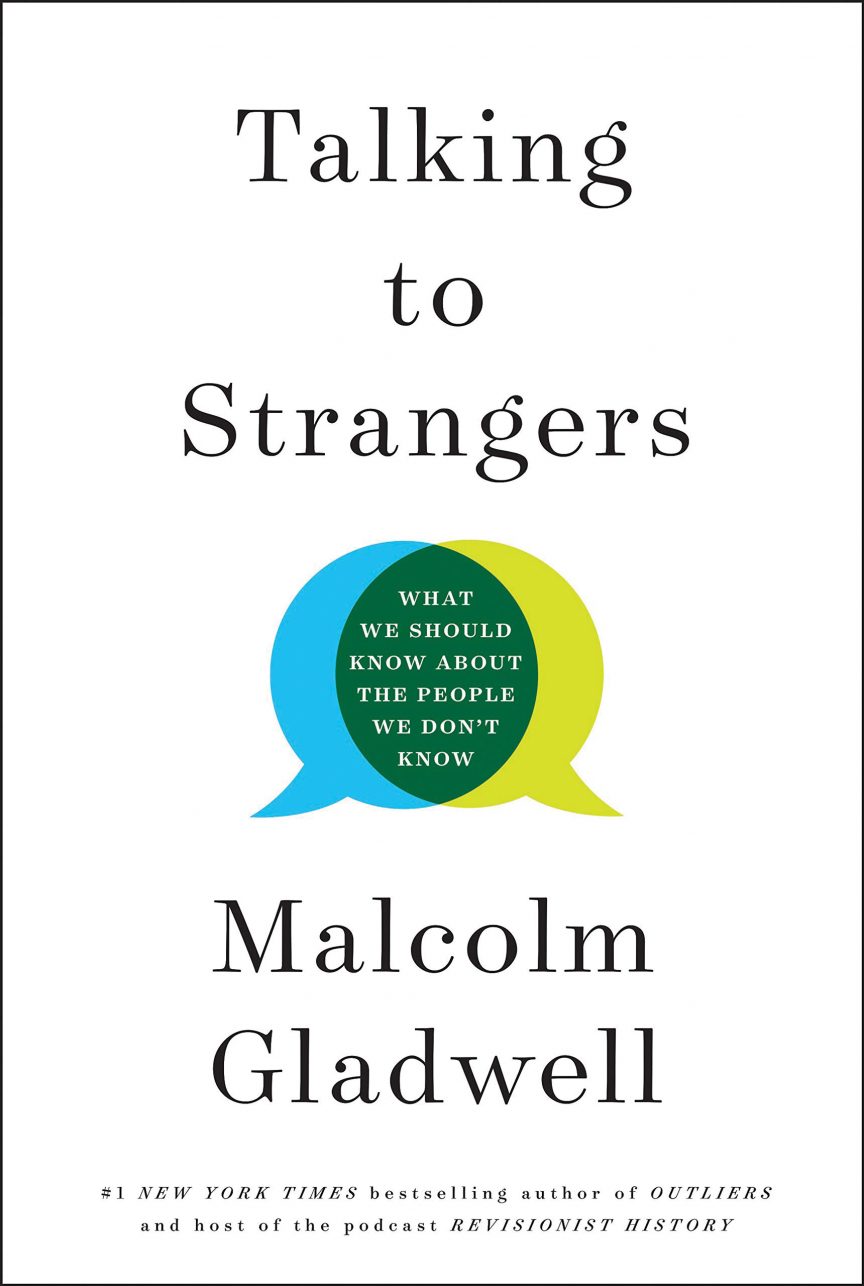#1 New York Times bestselling author and host of the podcast Revisionist History Malcolm Gladwell, Read by the author
Malcolm Gladwell’s “Talking to Strangers: What We Should Know About the People We Don’t Know” was released in audiobook format in September of 2019 and I was eager to listen. Gladwell has earned a reputation for well-researched writing and captivating storytelling and I was already a fan. Much to my delight, I found that Gladwell himself provided the narration. Personally, I am a big fan of audiobooks read by the author. They tend to sound and feel more authentic and emotional when the narrator has a personal connection to the content.
With already high expectations, I was immediately impressed with the production quality of the audiobook. I didn’t even realize that the concept of an author-narrated audiobook COULD be improved upon, but Gladwell managed to craft a listening experience much like you would expect from high-quality radio and podcast programs. At every possible instance, “Talking to Strangers” incorporates the voices of those involved in the story and with whom Gladwell spoke along the way. It also includes a first for an audiobook: a theme song! The moving beat of Janelle Monae’s “Hell You Talmbout” enhances and punctuates the narrative throughout. This isn’t just a regular audiobook — it’s a listening EXPERIENCE.
Accompanying this compelling audio production is some heavy subject matter, filled with stories of injustice and human suffering. Fair warning: some readers may find parts of the narrative difficult at times. Although the topic isn’t exactly easy to digest, I found the comparisons and uncovering of root cause fascinating.
Humans, by their very nature, tend to get a few things wrong when sizing up other humans — especially those with whom they don’t already have an existing relationship. As a result, misunderstandings abound throughout society. Gladwell unpacks many examples, including the arrest and subsequent death of Sandra Bland in 2015, years of abuse by Jerry Sandusky in the ’90s and 2000s, the wrongful conviction of Amanda Knox in Italy in 2007, and the Brock Turner rape case from Stanford University in 2015. Through these examples, Gladwell shares three very powerful ways we tend to get things wrong, and how we can account for these tendencies going forward.
The first two misunderstandings describe our tendencies to “Default to Truth” and our assumption of “Transparency” in facial expressions of emotion as we interact with others. Both are compelling points and Gladwell backs them up with both evidence and anecdote. It was the final concept of “Coupling,” however, that surprised me the most.
Much of human behavior is “coupled” to a specific place or time period. This phenomenon manifests in many surprising ways but, in essence, the environment itself can lead to certain human behaviors — good or bad. For instance, a simple safety net installed on the Golden Gate Bridge during renovations and maintenance actually decreased the OVERALL number of suicides in the area during that time period. Surprisingly, people who contemplate suicide may abandon those plans when their expected means are unavailable. In the 1950s, when the city of London changed the type of gas provided to its citizens’ homes, a common method of suicide at the time was no longer available. As a result, the OVERALL suicide rate fell dramatically. Researchers found that the decision to take one’s own life was coupled to a specific, readily-available method.
So, what does coupling have to do with our interactions with strangers? A group of researchers in the 1970s found that the majority of crime in any city is typically concentrated to only about 3-5% of the geographical area. Crime itself is coupled to a specific location. These researchers developed what became known as the Kansas City Preventive Patrol Experiment to carefully study, plan, and test theories about the most effective policing methods for reducing crime. They found that if they identified these parts of town and focused their efforts there, increasing patrols and aggressively targeting anyone who committed the slightest of infractions (broken headlights, expired license plates, etc.), they could successfully reduce the crime rate in the city as a whole.
Remarkably, during this 7-month trial, the beefed-up patrol managed to take 29 illegal guns off the street, averaged more than 2 arrests per night, and more than 5 citations per shift. The key finding, however, is that that type of aggressive policing ONLY works when it’s done in the 5% of the city where crime is most concentrated and ONLY from the hours of 7 p.m. to 1 a.m. This preventive policing was never intended for the remaining 95% of the city or for daylight hours, where it only resulted in angering citizens without affecting crime.
Unfortunately, some modern-day law enforcement techniques have evolved towards this particular aggressive style of policing, without regard to WHEN or WHERE the operations are conducted. Combine this misuse of time and place of aggressive policing with the human tendency to misunderstand strangers from differing backgrounds, and we continue to see failed outcomes, as in the case of Sandra Bland.
In spite of the suffering and trauma retold here by Gladwell, the overarching message is one of hope. Through diligence and persistence, paired with valid research and data, we can improve and learn from the mistakes of the past. I am ever hopeful that as we learn more about human behavior, we will also learn to apply that knowledge to the systems and infrastructure that we’ve built around us.
About the reviewer:
Danielle Williamson Richard is a graphic designer, owner of Richard Creative, and the art director of Lola Magazine. She is all about organizing and creating and has been a book nerd her whole life. Audiobooks and podcasts have become a near-obsession in her adult life, as listening while doing mundane chores makes for a much happier mama. Danielle is the mother of two exceptional children and spends her days managing Richard Creative with her husband, James.








